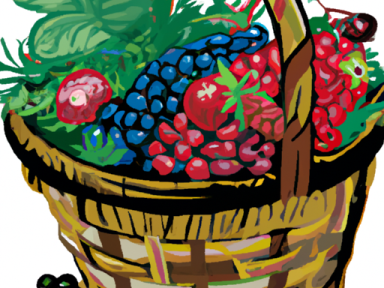
Wild Berry Bounty: Nature’s Nutrient-Rich Treasure Trove
When out in the wild, surrounded by nature’s untamed beauty, one cannot help but feel a sense of awe and wonder. However, it is important to remember that the wilderness can offer both life-sustaining nourishment and treacherous threats. One skill that every self-reliant individual should possess is the ability to identify which wild berries are safe to consume and which may be toxic. In this article, we delve into the world of wild berries, highlighting some of the most commonly found varieties and how to differentiate them from their potentially deadly look-alikes.
The Blueberry’s Doppelgänger: The Deadly Belladonna
Blueberries are a well-known and beloved fruit that grows wild in various parts of the world. Bursting with antioxidants and essential nutrients, these tiny berries offer a delicious snack that not only pleases the taste buds but also supports overall health. However, lurking in the shadows is their dangerous look-alike, the deadly belladonna.
Belladonna berries may resemble blueberries at first glance, but consuming even a few of these toxic morsels can have dire consequences. The nightshade family, to which belladonna belongs, contains alkaloids that can cause hallucinations, paralysis, and even death. To distinguish blueberries from belladonna, pay attention to the following key characteristics:
- Size: Blueberries are typically smaller, ranging from 5 to 10 millimeters in diameter, while belladonna berries are slightly larger, measuring around 10 to 15 millimeters.
- Color: Blueberries have a dark blue hue with a slightly frosty bloom, whereas belladonna berries are a deep, shiny black.
- Texture: The skin of a blueberry is smooth, while belladonna berries have a slightly wrinkled appearance.
- Growing Pattern: Blueberries grow in clusters on shrubs, while belladonna berries grow in small groups or individually on a low-growing herbaceous plant.
Strawberries: Nature’s Sweetheart
With their vibrant red color and irresistible flavor, strawberries are a delightful treat for foragers lucky enough to stumble upon them. Packed with vitamin C, manganese, and antioxidants, these heart-shaped fruits provide a refreshing burst of nourishment. However, it is essential to be able to discern true strawberries from their toxic counterparts, such as the false strawberry.
False strawberries may look tempting, but a wise forager knows better than to be deceived. Unlike their harmless counterpart, false strawberries can cause vomiting, diarrhea, and stomach discomfort when consumed. To differentiate between the two, keep an eye out for the following distinguishing features:
- Leaf Arrangement: True strawberries have leaves that are arranged in groups of three. False strawberries, on the other hand, have leaves that are arranged in groups of five.
- Appearance: True strawberries have seeds on the outer surface of the fruit, while false strawberries have seeds on the inside of the fruit.
- Taste: True strawberries have a sweet and juicy flavor, whereas false strawberries tend to taste bland or slightly bitter.
Raspberry Roulette: Friend or Foe?
Raspberries, renowned for their tantalizing tartness and delicate texture, are a favorite amongst foragers and homesteaders. Rich in antioxidants, fiber, and vitamin C, these crimson gems offer a delectable addition to various dishes. However, among the thorny brambles, lurks a berry that bears a striking resemblance – the thimbleberry.
While the thimbleberry is not exactly toxic, its lack of flavor and nutritional value makes it an inferior choice when compared to its raspberry relative. To distinguish between the two, pay attention to the following characteristics:
- Fruit Structure: Raspberries are made up of tiny individual drupelets, while thimbleberries are solid and lack the segmented structure.
- Color: Raspberries are red, while thimbleberries are typically a shade of orange or salmon.
- Size: Raspberries are generally smaller, while thimbleberries tend to be larger, sometimes up to the size of a quarter.
- Taste: Raspberries have a vibrant and tangy flavor, whereas thimbleberries are often described as watery and tasteless.
The bountiful world of wild berries regales us with flavors to savor and nutrients to nourish our bodies. However, nature’s gift comes with potential perils. With the ability to identify these edible treasures from their toxic look-alikes, you can confidently embark on your foraging adventures, ensuring that your wild berry bounty provides sustenance without compromise.



GIPHY App Key not set. Please check settings